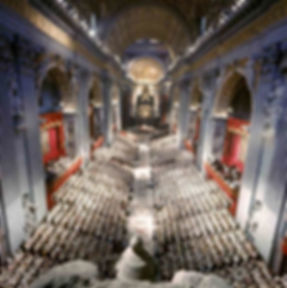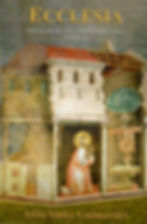
Vatican Council II Exposed

"The Collection: Eli, Eli, Lamma Sabacthani? establishes the author Atila Sinke Guimarães as one of the best informed latter-day students of that epochal event, the Second Vatican Council. Up to this moment, the most encyclopedic and detailedly informed examination of the Council was provided by Professor Amerio in his Iota Unum. Guimarães’ Collection bids fair to replace Iota Unum as the best all-purpose source-book about the Council; and it is not hazardous or rash to predict that this work of Guimarâes will be a standard reference work on the subject and well into the 21st century.
The title of this first volume, The Murky Waters of Vatican II, tells exactly what the contents are. All of us who lived through the years of Vatican Two (1962-1965) and have had to deal with the con-sequences can recognize immediately the pinpoint accuracy of this first volume: the ambiguity, cultivated and, as it were, perfected in the composition of the sixteen main documents of the Council, is now seen as the most skillful means devised to undo the essential Roman-ness and Catholicism of the Roman Catholic Church, and to deliver that entire one-billion member institutional organization into the ready and eager hands of those for whom the existence of the traditional papacy and hierarchical organization has long been anathema. One reads in this volume with a certain sickening feeling the unified way in which the Church’s own theologians and prelates conspired willingly to bring about the present trend to the de-Romanization and de-Catholicizing of the once monolithic institution."
-From the Special Foreword by Fr. Malachi Martin
Atila Guimarães Explains His Collection:
This is the complete first video in the new series on Eli, Eli, Lamma Sabacthani? (the 11-volume collection on Vatican Council II, written by Atila Guimarães and translated by Marian T. Horvat, Ph.D), available to watch for free here on YouTube. Discover the monumental book that broke the fear to speak out against Vatican II. Watch the author, Atila Guimarães, explain how Dr. Plinio Correa de Oliveira assigned him the task to analyze the Council, how ambiguity in the texts allowed Progressivism to install itself in the Catholic Church, and how the progressivist authorities created the crisis that we have in the Church today. A work that took 35 years to complete!
This is the second video in our 11-video series on Eli, Eli, Lamma Sabacthani being presented to the world now for the very first time. In this exposition, Mr. Guimarães defines the spirit of the Council, and explains the Church's traditional concepts of militancy, sacrality, and hierarchy. Also included are quotes detailing the shocking offenses against the Church made by the progressivist theologians who wrote Vatican II, as well as offenses made by Popes and prelates. Contemporary photo and video examples illustrate the themes. Learn the meaning of the documents, one step at a time, and understand the current crisis in the Church.
This is the third video in our 11-video series. In this exposition, Mr. Guimarães continues into Volume II: Animus Injuriandi II. He shows some of the offenses against the Faith made by Progressivist Popes, and explains two important theories of Progressivism: 1) The Church of the Condemned Ones, and 2) The Progressivist Four Last Things. After Vatican II, a massive tide of insults rose against the Faith as it was always taught. Progressivists felt free to insult the past Faith, its dogmas, sources and sacraments. Guimarães offers Readers an appalling list of such offenses as an expression of the spirit of the Council.
This is the fourth video in our 11-video series on Eli, Eli, Lamma Sabacthani, the monumental work on Vatican Council II. This presentation is a primer and supplement to Volume IV: Animus Delendi I. In Video 4, you will learn about the doctrine of kenosis, its heretical foundations, and how it is used to justify destroying the Church. Also explained: the characteristics of the Catholic Church, vs the characteristics of the Progressivist Church (and how the latter is designed to destroy the former).

.jpg)




























